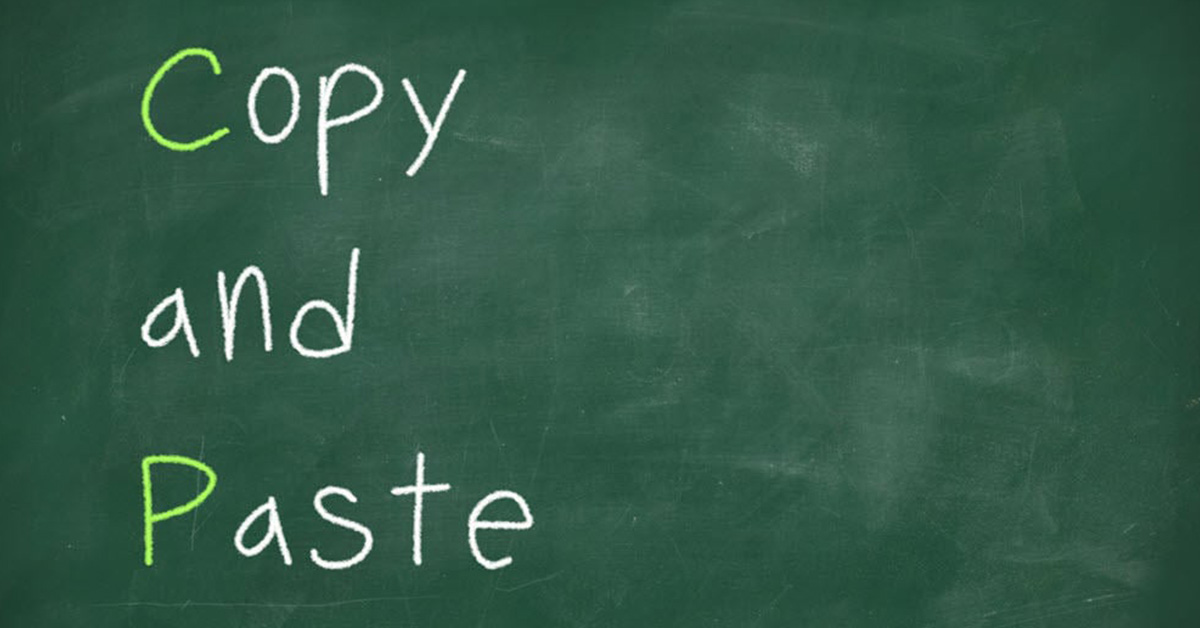Recently, we’ve had two different websites move to our agency and hosting services that were built by other development agencies that were found to have plagiarized content. The first one, we fortunately caught ourselves but on the second website, we found out when we were contacted by the original owner of the content. They were kind and asked that we either remove it or cite it as our source for that information. We resolved the issue quickly but it was still embarrassing.
Any content you create, or pay someone else to create, for your website or other marketing material belongs to you. Any content someone else creates for their website or marketing material belongs to them and copyright law protects it.
How do you know if you can use content you find on the web?
Determining whether you can use the content you find on the web depends on several factors, including the type, its copyright status, and your intended use. Here are some guidelines to help you determine if you can use it:
- Check for Copyright Information – Look for copyright notices or statements on the webpage. Some creators explicitly grant permission for certain uses through licenses like Creative Commons.
- Public Domain – Content in the public domain is free use by anyone. Check if the content has an explicit label of the public domain or if its copyright has expired.
- Fair Use – In some cases, you may be able to use copyrighted content under the doctrine of fair use. Fair use is a complex legal concept that considers factors like purpose, nature, amount, and effect on the market. Fair use is typically applicable for purposes such as criticism, commentary, news reporting, teaching, and research, but it should be used cautiously.
- Licensed Content – Content under licenses like Creative Commons may have specific terms that dictate how you can use it. Be sure to follow the terms of the license, which may require attribution, non-commercial use, or other conditions.
- Seek Permission – If you’re unsure about whether you can use a particular piece of content, it’s a good practice to contact the content creator or copyright holder and request permission for your intended use.
- Use Original Content – Whenever possible, create your own content or use resources that you have clear rights to, as this eliminates the risk of copyright infringement.
- Respect Terms of Use – Many websites have terms of use or terms of service that outline their content use. Review these terms to understand what is legal.
- Use Proper Attribution – If you’re using content with permission or under a license, make sure to provide proper attribution as required. This acknowledges the original creator and their work.
- Avoid Plagiarism – Even if you can use certain web content, always avoid plagiarism by properly citing and referencing the sources you incorporate into your work.
Remember that copyright laws and regulations may vary by country, and digital content can be subject to different rules than physical content. When in doubt, it’s a good practice to err on the side of caution, seek permission when needed, and give proper credit to content creators to respect their rights and maintain ethical standards
So, what is Plagiarism?
Plagiarism is the act of using someone else’s words, ideas, or work without giving them proper credit or without permission and presenting it as one’s own. It is a form of academic and intellectual dishonesty, as well as a violation of ethical and professional standards in various fields, including academia, journalism, literature, and more. Plagiarism can take many forms, including:
- Copying and pasting text from a source without proper citation.
- Paraphrasing someone else’s work without proper attribution.
- Submitting someone else’s work as your own.
- Failing to provide adequate references or citations for information borrowed from sources.
- Self-plagiarism, or reuse of your own work without proper acknowledgment, especially in academic contexts where originality is necessary.
In professional settings, plagiarism is a serious offense and can lead to severe consequences like loss of credibility or even legal action. To avoid plagiarism, it is important to properly attribute and cite all sources used in your work, whether it’s a website, a brochure, Ean email marketing campaign, or sales material.
How do you protect yourself?
If you are working with an agency, ask them to send you the content they create for your website before publishing, and take key phrases from that content and google them. If you get a result back that matches, then keep reading. You may have found your source. The same goes for photos, google provides search by image on their search engine – it’s that little picture icon off to the right. Your agency may have purchased stock photos to use so don’t assume that a search result is immediately incriminating. Ask for a receipt for that photo.
Ultimately, you could create your own written content and take your own photos but who has time for that when you’re running a business? Just ask questions and always double check and if it doesn’t belong to you, don’t use it without paying for it or getting permission.
Some of the content in this article was written using ChatGPT, an OpenAI product. The photo was purchased using an iStock photo subscription account (see it’s that easy).

